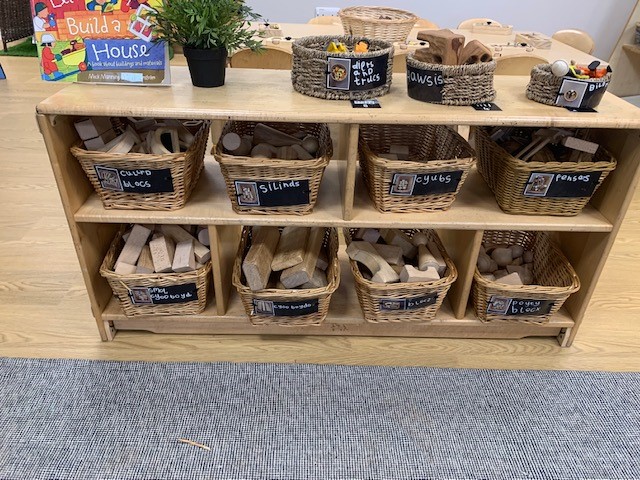
When the DfE Writing Framework (2025) landed, many of us read the line about children in Reception being taught to “form lower-case and capital letters correctly” and felt that familiar flicker of tension. On paper it sounds reasonable — who wouldn’t want children to write confidently and fluently? But in practice, those of us who spend our days alongside four- and five-year-olds know that development doesn’t always follow policy timelines.
The framework’s emphasis on early transcriptional skills is designed to free up working memory for composition later on. In principle, that makes sense. But as Rosemary Sassoon reminded us more than three decades ago, handwriting isn’t a set of shapes to copy — it’s a movement skill that grows from the body outward. Before a child can form a letter, they need rhythm, direction and flow. They need to move.
Movement Before Mark
Sassoon’s phrase “movement comes before mark” has never been more relevant. Children’s first writing lessons happen not at a table but on the playground, the floor, or an easel. They happen when a child paints big circles with a roller, drags a stick through wet sand, or swishes a ribbon through the air.
Those sweeping movements strengthen shoulders and core muscles; they build bilateral coordination and control. Only when those foundations are in place can smaller, more refined movements develop. If we jump too soon to sitting at a desk and tracing letters, we risk interrupting that natural sequence.
Rhythm, Purpose and Play
The framework’s suggestion of “short, regular handwriting sessions” can sit beautifully alongside Sassoon’s work — if we focus on rhythm and purpose rather than mechanical repetition. Instead of rote copying, we might build in meaningful routines: signing up for snack, writing a play plan, labelling a model. These moments give children a reason to write, a context that makes sense, and the motivation to persist.
Repetition matters, but it should be rhythmic and comfortable. You can’t teach fluency by drilling discomfort.
Comfort Over Conformity
Sassoon cautioned against over-standardising posture and grip. Comfort, she said, matters more than uniformity. Of course, we model a dynamic tripod grip and a good sitting position, but we also notice when a child’s way works for them.
The child who curls on their side in the book corner, pencil tucked at a quirky angle, may still be developing the control and flow they need — just differently. Clay, threading, building and squeezing all strengthen the muscles that make writing possible later.
Teaching by Movement Family
To develop fluency, Sassoon grouped letters not alphabetically but by movement family. Think of the c-family, the r-family, the zigzag-family. This helps the hand learn in patterns, building motor memory through rhythm rather than rote. It’s the physical version of phonological awareness — feeling the pattern as well as seeing it.
When children talk themselves through a movement — “round, up, down” — they are forming neural connections that link body and mind. It’s handwriting as embodied cognition, just as Roessingh and Bence (2018) describe in their work on literacy through movement.
Linking Sound, Movement and Meaning
The framework encourages links between handwriting and phonics. Sassoon would agree — but she’d remind us that those links should be multi-sensory. When introducing a new grapheme, pair the sound with a movement phrase and a kinaesthetic activity. Let children trace it in sand, paint it in the air, stamp it with sponges. Writing should never be divorced from meaning.
Fluency Before Joining
By the end of Key Stage 1, the framework expects a joined, fluent script. Sassoon would nod — if fluency comes first. Children should begin to join letters when they’re ready, not when a timetable dictates it. Joins are natural extensions of movement, not a new set of rules. Legibility and comfort come before uniformity.
It’s also worth remembering that by the end of Key Stage 1, a child could be as young as six or almost eight, depending on their birthday. Developmentally, those months can make a world of difference. The process of endochondral ossification — the gradual hardening of the small bones in the hand and wrist — happens at different rates for different children. Some will have the fine-motor stability to sustain fluent, joined writing; others quite simply won’t yet have the physical maturity to do so comfortably.
When we understand this, we see that fluency isn’t just a cognitive or linguistic skill — it’s neuromotor and biomechanical too. Our expectations must be flexible to fit the child, not the other way round.
Seeing the Process, Not Just the Product
When we assess handwriting, we’re often asked to show evidence — samples, progress, neatness. Sassoon urged us to watch the process as well as the product. Is the child relaxed? Is there rhythm in their movement? Are they writing with purpose?
Writing for Real Reasons
Perhaps the most important reminder of all: handwriting is a tool for communication, not display. Children write best when it means something — a sign for their den, a letter to a friend, an invitation to a tea party. Purpose builds stamina, motivation and pride.
A Question Worth Holding
Are we teaching handwriting as a movement system that enables communication, or as a set of shapes to be copied?
When we teach handwriting as a movement art rather than a mechanical act, we nurture fluency, confidence and joy. We meet the DfE’s outcomes — but more importantly, we honour what we know about how children truly grow as writers.
References
Sassoon, R. (1990). Handwriting: The Way to Teach It. Chapman & Hall.
Sassoon, R. (2003). The Art and Science of Handwriting. Intellect Books.
Goddard Blythe, S. (2012). Assessing Neuromotor Readiness for Learning. INPP Press.
Neaum, S. (2023). Children’s Ways of Knowing. Teesside University.
Roessingh, H. & Bence, M. (2018). Embodied Cognition and Early Literacy.
DfE (2025). Writing Framework.
Leave a Reply